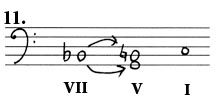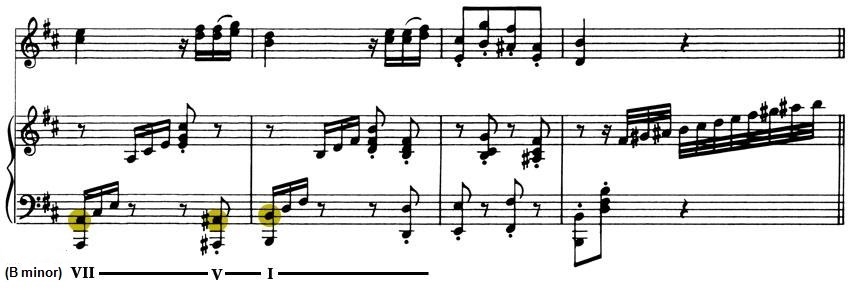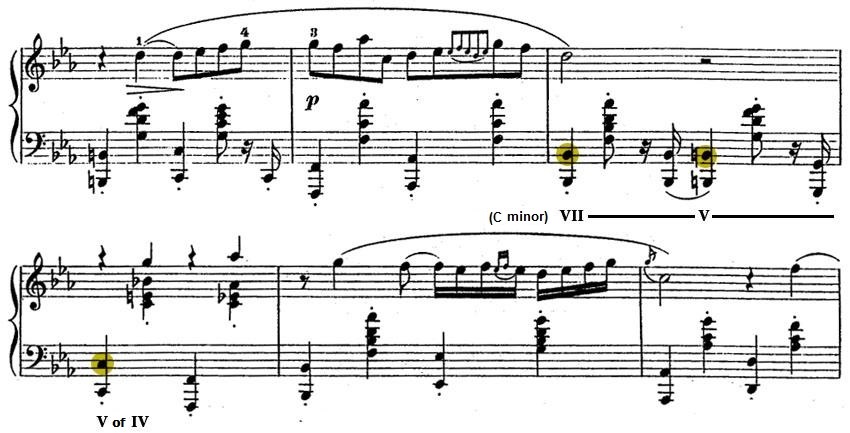1.3 - A practice of analysis in the tonal harmonic discourse from Bach to Wagner ||
A) FORMULAS - 1. Definition of
a formula ::
2. Presentation of
the little catalogue of harmonic vocabulary ::
3. User's guide to
the little catalogue and various instructions ::
4. Examples
illustrating the little catalogue (motifs: 1, 2, 3, 4, 5, 6a, 6b, 7, 8, 9, 10, 11, 12, 13, 14, 15, 16, 17, 18, 19, 20, motifs in combination)
B) SEQUENCES - 1. Definition of a
harmonic sequence :: 2. Classifying
sequences :: 3. Melodic
formulations: characteristic motifs :: 4. The tonal
nature of the harmonic sequence :: 5.The tripartite
structure of the harmonic sequence :: 6. A
modulating sequence or not? :: 7. Diversification
of harmonic content :: 8. The harmonic
sequence as a place of subversion :: 9. Conclusion
4. EXAMPLES ILLUSTRATING THE LITTLE CATALOGUE
Motif no 11

|
Example 224 : J. Brahms : Violin concerto, op. 77, III, Allegro giocoso, ma non troppo vivace (mm 5-8)

Example 225 : F. Chopin : Nocturne, op. 48, no 1 (mm 14-17)

Example 226 : F. Liszt : Années de pélerinage, Première année, Vallée d'Obermann (mm 85-88)

Example 227 : J.S. Bach : The Well-Tempered Clavier, vol. II, Prelude no 9, BWV 878 (mm 25-27)

Example 228 : F. Schubert : Wanderer-Fantasy, D. 760, IV, Allegro (mm 18-19)

motif no 12 
|
